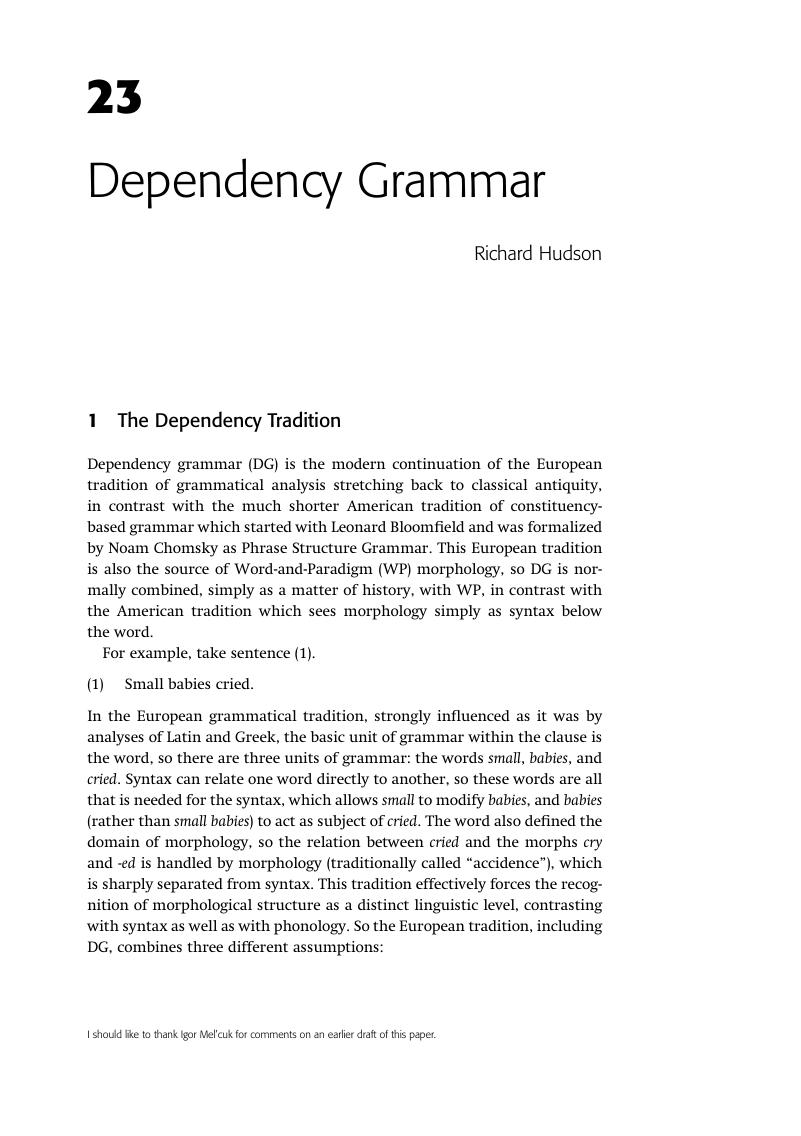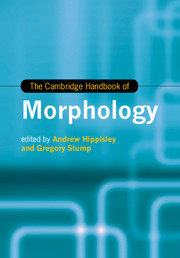Book contents
- The Cambridge Handbook of Morphology
- Cambridge Handbooks in Language and Linguistics
- The Cambridge Handbook of Morphology
- Copyright page
- Contents
- Contributors
- Acknowledgments
- Abbreviations
- 1 Introduction
- Part I Foundations of Morphological Theory
- Part II Issues in Morphological Theory
- Part III Morphological Principles
- Part IV Morphological Frameworks
- Part V The Role of Morphology in Theories of Phonology and Syntax
- 19 The Role of Morphology in Generative Phonology, Autosegmental Phonology, and Prosodic Morphology
- 20 The Role of Morphology in Optimality Theory
- 21 The Role of Morphology in Transformational Grammar
- 22 Morphology in Constraint-based Lexicalist Approaches to Grammar
- 23 Dependency Grammar
- Part VI Domains for the Evaluation of Morphological Theories
- Index of languages
- Index of names
- Index of subjects
- References
23 - Dependency Grammar
from Part V - The Role of Morphology in Theories of Phonology and Syntax
Published online by Cambridge University Press: 21 January 2017
- The Cambridge Handbook of Morphology
- Cambridge Handbooks in Language and Linguistics
- The Cambridge Handbook of Morphology
- Copyright page
- Contents
- Contributors
- Acknowledgments
- Abbreviations
- 1 Introduction
- Part I Foundations of Morphological Theory
- Part II Issues in Morphological Theory
- Part III Morphological Principles
- Part IV Morphological Frameworks
- Part V The Role of Morphology in Theories of Phonology and Syntax
- 19 The Role of Morphology in Generative Phonology, Autosegmental Phonology, and Prosodic Morphology
- 20 The Role of Morphology in Optimality Theory
- 21 The Role of Morphology in Transformational Grammar
- 22 Morphology in Constraint-based Lexicalist Approaches to Grammar
- 23 Dependency Grammar
- Part VI Domains for the Evaluation of Morphological Theories
- Index of languages
- Index of names
- Index of subjects
- References
Summary

- Type
- Chapter
- Information
- The Cambridge Handbook of Morphology , pp. 657 - 682Publisher: Cambridge University PressPrint publication year: 2016
References
- 2
- Cited by



